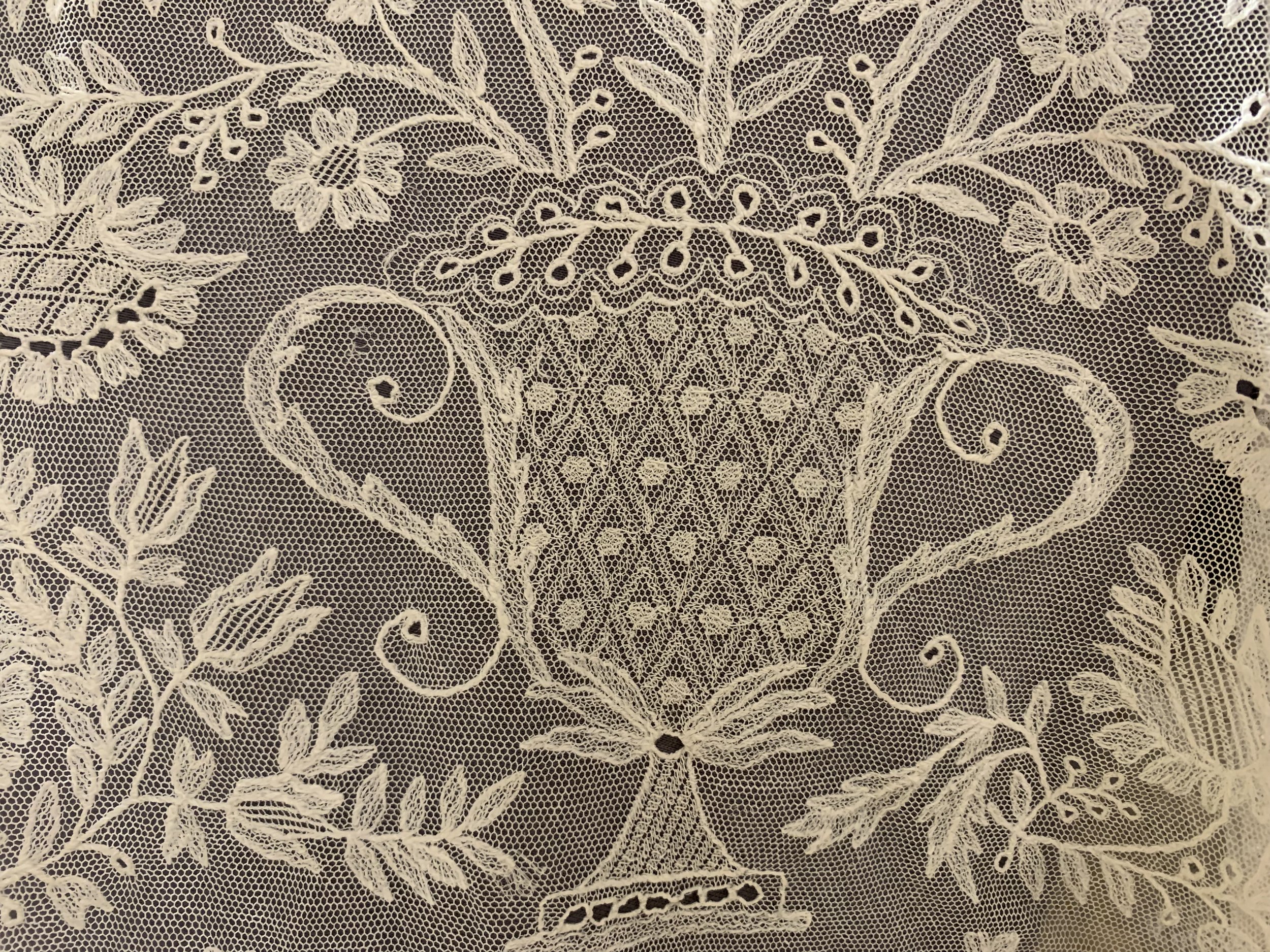
Upcycling from the past
Upcycling from the past
by Pompi Parry, Fashioning Our World volunteer and lace expert
Many of us are busy up cycling – reusing garments to create something new. How often, while working on our ‘new’ creation do we think how future generations might look at it and wonder what it might have been originally? It may be obvious but on close inspection it may pose lots of unanswerable questions. This is exactly the situation with one of the exhibits in the Fashioning Our World exhibition.
Many years ago I purchased a white decorated net lace blouse. At the time the blouse didn’t particularly interest me but the bobbin lace decorating the front and frills at the cuffs did. As a Rookie collector I was thrilled to own some early to mid-eighteenth century Binche (Flemish) bobbin lace. Despite it’s very poor and much repaired condition, I carefully removed the lace from the front of the blouse but left the frills in place on the cuffs.
Over the years I have re-visited the blouse and assessed it was an example of Wartime Make Do and Mend - pieces of an old veil stitched together with a mushroom colour heavy sewing thread and fine string for the gathering thread at the wrists.
Only now have I put on a detective’s hat and scrutinised the piece in more detail. The blouse is made from a cotton machine net decorated by hand with threads sewn through the meshes of the net with a needle to form the outline of the design and the many intricate ornamental fillings. This type of work known as Needle run net, also often called Limerick was worked from the early nineteenth century onwards in many places, as well as Ireland including the UK, Europe and USA.
The blouse is an exquisite example, possibly made in Limerick, Ireland, in the late nineteenth or very early twentieth century, the large size of the design - a very large urn containing flowers with peacocks and other small birds amongst the foliage is unusual. Within the blouse there are parts of seven repeats of the pattern but each is worked with different filling stitches. The back is the only part of the garment where the pattern runs from top to bottom, whilst on the sleeves and front it lies on its side and upside down on the collar and an insert at the lower edge of the back panel.
One edge of the lace pieces has an integral scalloped edge whilst the other is unfinished but encapsulated in a narrow, deep cream colour, silky braid. It appears this braid was in place on the original lace as it runs along the seam inside the sleeves, along the upside down addition to the waist edge of the back and the edge of the collar. This was very confusing as I could not comprehend how it fitted into my original concept of the re-use of a square veil.
However, I then measured and made a diagram of each component and with the help of a dress making friend drew a pattern layout. Our conclusion is that this had not been a veil but a flounce measuring approximately 18” deep x 110” long, the braid attached to the top edge and the scallops forming the bottom. The sleeves and bodice fronts had to be cut along the length of the flounce as it was not wide enough, giving the reason why the pattern lies on its side. So that the stunning design of the Urn could be the right way up on the back an extra piece had to be added at the waist – upside down so the scallops finished the lower edge.
Most of the puzzle has been solved, however one question remains – which can never be answered. The bottom edge of the blouse fronts are unfinished so the blouse was unlikely to have been worn in its present state. Was it going to be attached to a skirt or was it, after so much ingenious reconstruction and mending for some reason just abandoned? Was it going to be worn at a wartime wedding which never took place - we can never know? What is absolutely certain is that the person who made the blouse in the 1940s used two, treasured pieces of lace, made about 150 years apart and ingeniously up cycled them into a new garment. This garment was treasured until eventually being put on the market in the 1990s when I bought it. I have treasured it ever since and I am pleased to loan it to Fashioning Our World exhibition so many more people can appreciate it.

